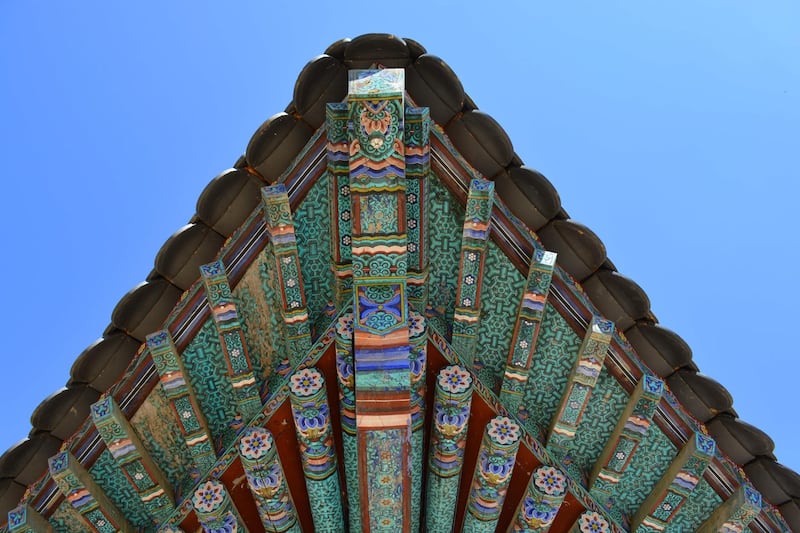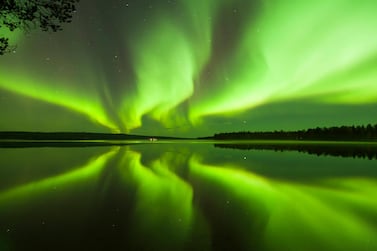It takes me by surprise. As I focus my camera lens on the multicoloured facade of Gyeongju's Bulguksa Temple, I spot something in my peripheral vision. I lower my camera, turn my head and see a procession of Caucasian foreigners walking with their heads bowed and their hands clasped together in front of them. What makes them so noticeable is they're wearing seung bok, the loose, grey robes commonly donned by Korean Buddhist monks.
The seung bok is similar to, but looser than hanbok, the famous form of Korean dress that dates back more than 1,500 years. It is common in South Korea to see foreigners wearing hanbok – there are shops, cultural bureaus and tourist sites across the country that offer travellers the chance to try on these stately outfits. But I've never seen foreigners wearing Korea's holy garb.
A quick Google search explains. Bulguksa Temple is one of 30 historic Buddhist temples across the country that allow tourists to stay on site for a short period of time. Living inside a Unesco World Heritage Site sounds like a tourism fantasy, but in South Korea it's a reality, thanks to the country's nationwide Templestay programme, which lets visitors stay at a temple for between one and three nights, while learning and engaging in monastic activities.
Although monasteries across Asia accept foreigners into their midst, it is typically as students or apprentice monks who live and train on site for an extended period. The short time frame and easy access to the programme is what makes South Korea's templestays so unique.
Founded by the Jogye Order of Korean Buddhism in 2002, the programme has several aims. Firstly, it is designed to give foreigners an appreciation of Korean culture, which has been shaped by Buddhism since it arrived in the country more than 1,600 years ago. Secondly, it attempts to convey the peace and satisfaction that can be achieved by living in a monastic fashion. Thirdly, the programme highlights some of the most extraordinary pieces of architecture in South Korea. During their stay, guests dress, sleep, eat and behave as the monks do. They take part in Buddhist services, Seon meditation, communal chores, tea ceremonies, ritualistic meal offerings and lotus lantern-making classes. Here are four to try.
Beomeosa temple
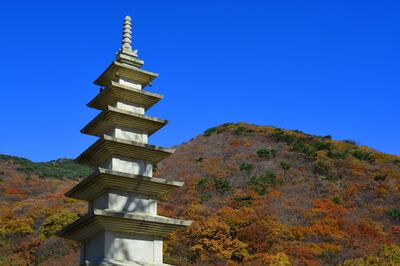
Beomeosa temple has sat on this hillside for 1,300 years. Yet, it is hard to imagine that it has ever looked more beautiful than it does right now. It is late afternoon on a clear autumn day and the colours within my field of vision are almost endless.
In the forest draped across this hillside, overlooking the southern city of Busan, dark greens give way to various shades of maroon, fuchsia, orange and gold. All of these hues sit below a cloudless and deep-blue sky, alongside the wildly colourful exterior of the cluster of buildings that make up Beomeosa temple.
The dense mix of colours, lines, floral motifs and geometric patterns that adorn the temple are called Dancheong – a design system that has been used to decorate Korean temples for more than 2,000 years. It is this design that makes the country's temples so distinctive, but Beomeosa stands out anyway. Its lofty perch on Mount Geumjeong makes it visible from countless vantage points in downtown Busan.
Not to mention that it is protected by a band of fighting monks. Before the Imjin War in the 1590s, when Korea was invaded by Japan, Beomeosa's monks learnt a style of Korean martial arts called Sunmudo. Legend has it that they used these combat techniques to help repel the Japanese. One of the most unique aspects of the Beomeosa templestay is that guests can partake in Sunmundo training with the monks.
Bulguksa temple
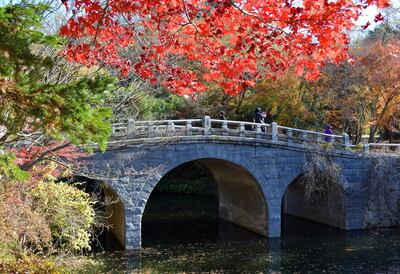
Chances are you haven't heard of the fascinating Gyeongju. It must be one of the lowest-profile cities with a large concentration of cultural attractions that are Unesco-listed. Gyeongju was the capital of the peninsula's Silla kingdom for about 1,000 years up to the 10th century AD. It was, during that period, one of the largest and grandest cities in the world. But these days, it is a relatively anonymous metropolis of fewer than 300,000 people that is overshadowed by the huge South Korean cities of Seoul and Busan.
It is, however, still a very popular destination for Koreans due to its trove of remains from the Silla kingdom era. These include pagodas, castles, imperial mausoleums and temples. More than 1,200 years old, Bulguksa, a sprawling complex built on a forested hillside, is among the most important of these architectural relics.
Tourists attending the templestay can pray at the Hall of Great Enlightenment, Vairocana Buddha Hall and the Hall of Supreme Bliss. They can also hike up the hill to see the incredible Seokguram Grotto shrine, which is hidden inside a cave and boasts unique rock sculptures.
Jogyesa temple
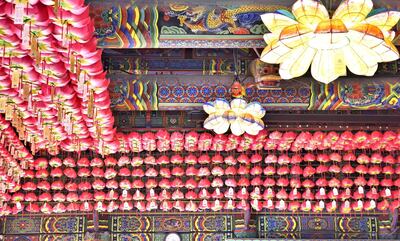
I almost feel hypnotised. Never in my life have I seen so many layers of pattern and colour on one building, each competing for my attention so strongly that my eyes are overwhelmed. Beneath an intricate mural of a Korean scholar, through a green lattice window, I see a giant painting of Buddha flanked by a panel of glowing LCD lights. The best way to describe what I’m looking at is a word I would never have associated with a religious structure – psychedelic.
The beyond bold design of the 14th-century Jogyesa temple creates a startling contrast with the uniform steel and glass skyscrapers that surround it here in the Seoul Central Business District. This part of Seoul is so modern and orderly that, with its ancient history and chaotic design, Jogyesa offers a wonderful counterpoint.
There is perhaps no more important temple in all of Korea. Jogyesa is the headquarters of the Jogye Order, the traditional order of Korean Buddhism. It attracts worshippers from all over the country and, as a result, is very busy. Each time I have visited Jogyesa, its main prayer area, Dharma Hall, has been filled with people kneeling in devotion. It is a key venue for Buddhist festivals, ceremonies, lectures and rituals throughout the year, so if you want to do a templestay here, be sure to check for conflicting dates.
Bongeunsa temple
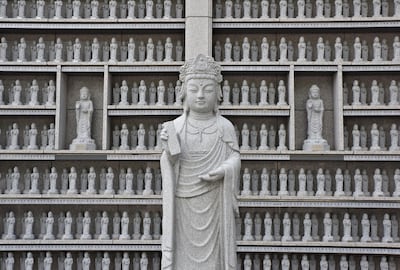
It is the trendiest part of Seoul, made globally famous by a smash hit pop song. Yet, the neighbourhood of Gangnam has long been important because of its the location of the 1,200-year-old Bongeunsa temple. Scattered across a hill, Bongeunsa is a cluster of attractive prayer halls home to more than 3,000 Buddhist scriptures. Each year, monks carry these scriptures above their heads as they march and chant during the annual Jeongdaebulsa ceremony.
Its most distinctive element though, looms above the prayer halls at the rear of the complex. A 23-metre-tall stone statue of Buddha is surrounded by a semi-circular stone wall into which are carved thousands more images of Buddha. This eye-catching feature, which was only built in the 1980s, has made Bongeunsa one of Seoul's most-visited tourist attractions.
